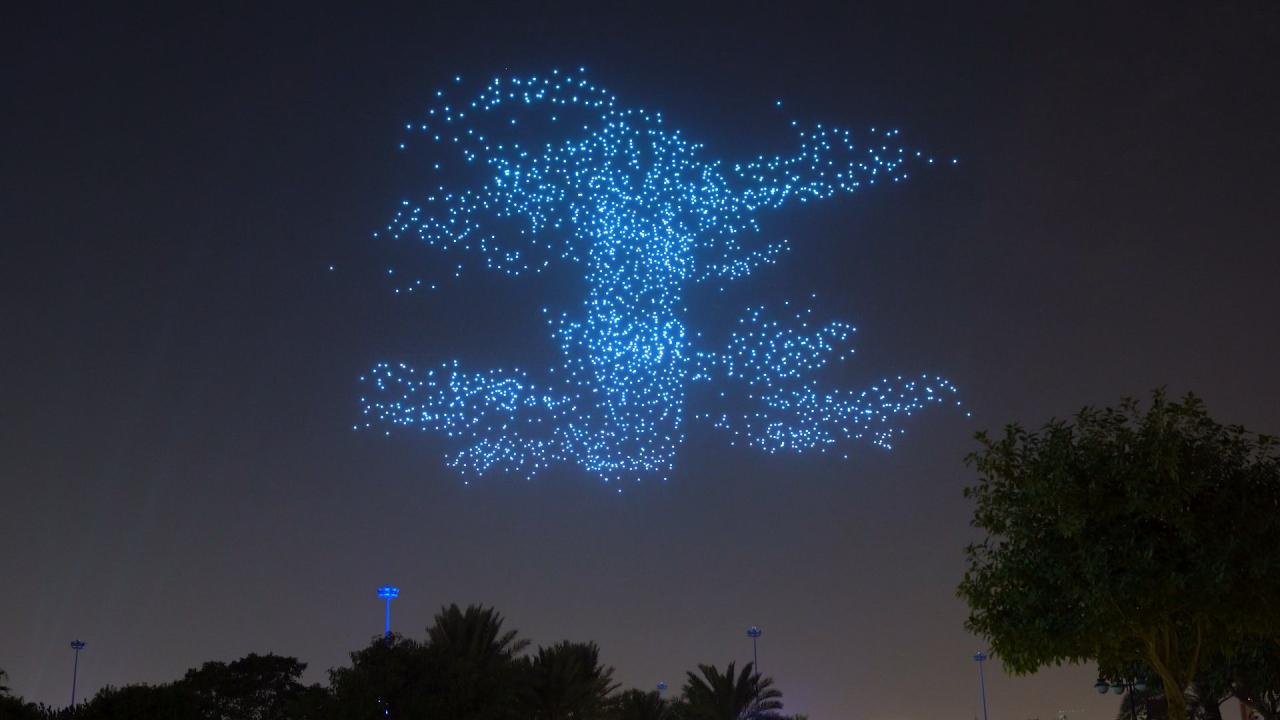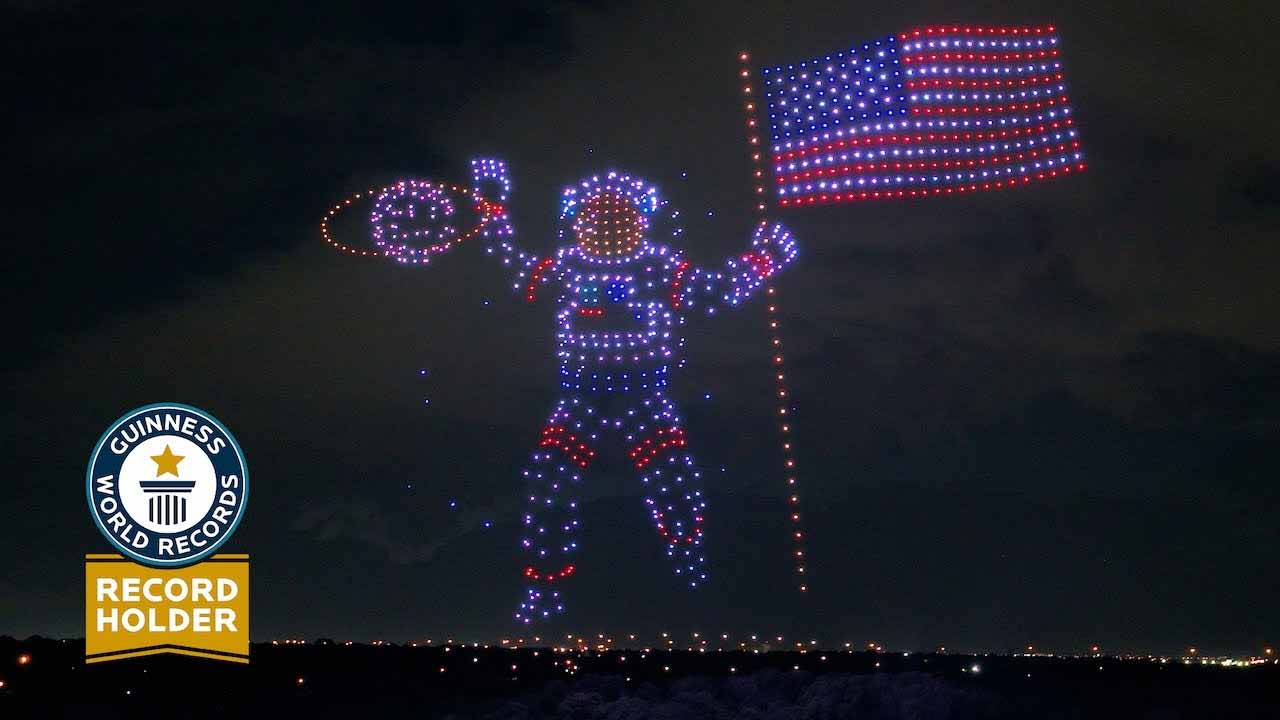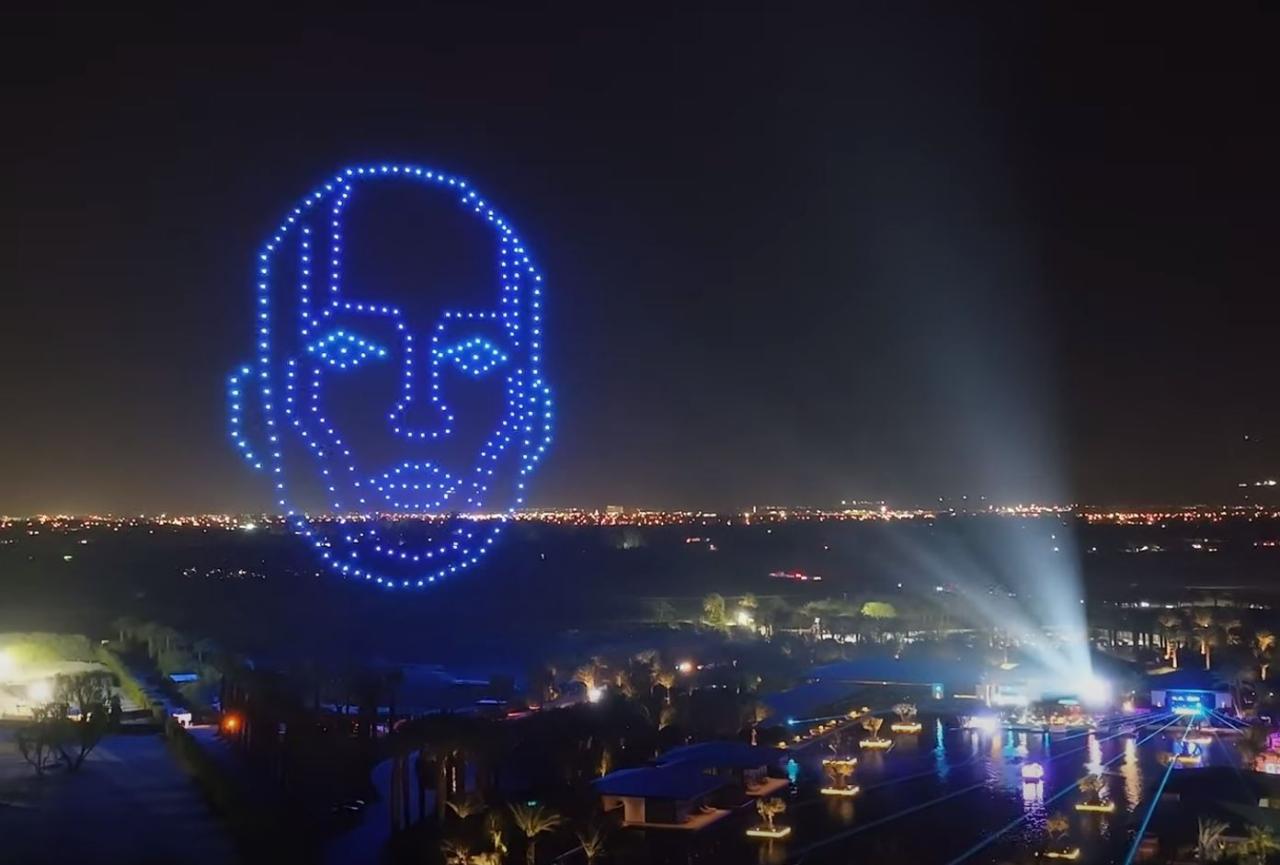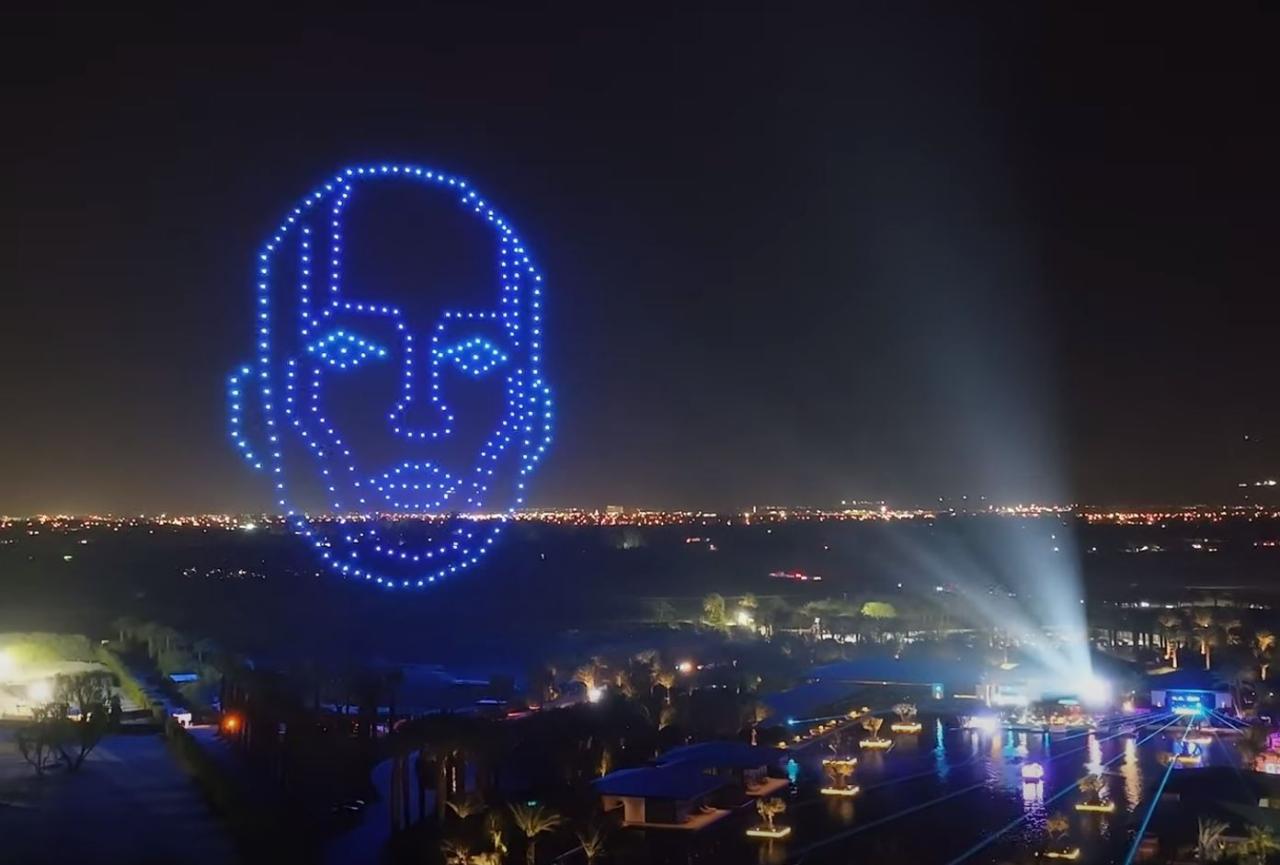Drone shows are transforming the entertainment landscape, offering breathtaking aerial displays of light, color, and movement. These captivating performances utilize sophisticated technology, intricate choreography, and creative artistry to create unforgettable experiences. From small, intimate events to large-scale spectacles, drone shows are becoming increasingly popular, captivating audiences worldwide with their unique blend of technology and artistry.
This guide explores the fascinating world of drone shows, delving into the technology behind the dazzling displays, the creative processes involved in choreography and design, the safety regulations that ensure responsible operation, and the business strategies that drive this burgeoning industry. We’ll cover everything from the types of drones used and their capabilities to the marketing strategies employed to reach a broad audience.
Drone Show Technology
Drone shows are captivating spectacles of light and movement, achieved through sophisticated technology. Understanding the underlying technology is key to appreciating the artistry and engineering involved.
Drone Types in Drone Shows
Various drone types are employed, each with specific strengths. Common choices include quadcopters for their maneuverability and stability, and hexacopters or octocopters for increased payload capacity and redundancy in case of motor failure. The choice depends on the show’s complexity and scale.
Software and Hardware Requirements
A successful drone show requires a robust system encompassing both software and hardware. This includes specialized flight control software capable of synchronizing multiple drones, high-precision GPS modules for accurate positioning, powerful ground stations for controlling the fleet, and reliable communication links to ensure uninterrupted command and control.
Drone Show Control Systems
Several control systems exist, each with its advantages and disadvantages. Some systems rely on centralized control, where a single ground station manages all drones, while others utilize decentralized control, distributing the workload across multiple ground stations for larger shows. The choice depends on factors like the number of drones, show complexity, and desired level of redundancy.
Drone Show Communication Flow Diagram
A simplified system diagram would show a central control station sending commands via a radio frequency (RF) network to individual drone controllers. Each drone’s GPS and IMU (Inertial Measurement Unit) data is sent back to the control station for real-time monitoring and adjustments. This feedback loop is crucial for maintaining synchronization and precision.
Comparison of Drone Models, Drone show
The table below compares key specifications of commonly used drone models. Note that these are representative values and may vary based on specific configurations and manufacturers.
| Drone Model | Flight Time (minutes) | Payload Capacity (grams) | Range (meters) |
|---|---|---|---|
| Model A | 25 | 500 | 1000 |
| Model B | 30 | 750 | 1500 |
| Model C | 20 | 250 | 800 |
Drone Show Choreography and Design
Transforming a technological marvel into a breathtaking artistic experience requires meticulous choreography and design.
Drone Show Choreography Process
The process typically begins with conceptualization, where the overall theme, narrative, and desired visual effects are defined. This is followed by 3D modeling and simulation to visualize the drone formations and movements. Finally, the choreography is translated into flight commands for the drones.
Artistic Styles in Drone Shows

Drone shows can adapt to various artistic styles, from abstract geometric patterns to representational imagery. Some shows tell stories, others evoke emotions, and some simply showcase the technical capabilities of the drones. The possibilities are virtually limitless.
Synchronizing Drone Movements and Light Patterns
Precise synchronization is achieved through sophisticated software that controls individual drone movements and lighting effects. Real-time feedback from the drones allows for corrections and adjustments during the show, ensuring a seamless performance.
Challenges in Creating Complex Formations
Creating complex and dynamic formations presents challenges such as maintaining precise positioning, avoiding collisions, and managing communication delays. Advanced algorithms and redundancy measures are employed to mitigate these risks.
Step-by-Step Guide for a Basic Drone Show Sequence
A simple sequence might involve drones forming a basic shape, such as a square, then transitioning to a circle, and finally dispersing. Each transition would involve carefully planned movements and timing to ensure a smooth and visually appealing performance.
Drone Show Safety and Regulations
Safety and compliance are paramount in drone show operations. Understanding and adhering to regulations is crucial for responsible and successful events.
Potential Safety Hazards
Potential hazards include drone malfunctions, collisions, uncontrolled descents, and interference with other aircraft. Environmental factors like wind and rain can also impact safety.
Safety Protocols and Emergency Procedures
Safety protocols involve pre-flight checks, redundant systems, emergency landing procedures, and trained personnel. Emergency procedures should cover scenarios such as drone failure, communication loss, and unexpected weather changes.
Drone shows are amazing, right? Think thousands of lights dancing in perfect synchronization. But even the most complex choreography pales in comparison to the intricate investigation needed after a major event like the korean air crash , where understanding the sequence of events is crucial. The precision needed in both scenarios – a drone show and accident investigation – highlights the power of controlled movement and data analysis.
Drone Show Regulations
Regulations vary significantly across countries. Some countries have specific permits and licenses required for drone shows, while others have more general regulations covering drone operation. It’s crucial to research and comply with the specific regulations of the location where the show will take place.
Drone shows are awesome, right? Think massive, coordinated light displays in the night sky. But imagine taking that to the next level, like the incredible visuals they achieved in the player 222 squid game 2 promotional drone show. That kind of precision and storytelling is what makes drone shows truly captivating, pushing the boundaries of what’s possible with this technology.
Impact of Airspace Restrictions
Airspace restrictions, such as those around airports or other sensitive areas, significantly impact drone show planning. Careful coordination with air traffic control and adherence to airspace limitations are essential.
Drone Show Safety Checklist
A comprehensive checklist would include pre-flight inspections, weather checks, communication tests, emergency procedures, and regulatory compliance verification.
Drone Show Business and Marketing
The successful execution of a drone show requires a sound business model and effective marketing strategies.
Drone Show Business Model
A typical business model involves offering drone show services to clients, including event planning, choreography, and technical execution. Revenue streams may include show fees, equipment rentals, and potential sponsorships.
Marketing and Promotion Strategies
Marketing strategies might include creating a professional website, using social media to showcase previous shows, attending industry events, and collaborating with event planners and organizers.
Target Audiences
Target audiences can range from corporate events and festivals to private celebrations and public spectacles. The marketing message should be tailored to the specific target audience.
Pricing Strategies

Pricing strategies depend on factors like the show’s duration, complexity, number of drones, and location. A tiered pricing structure may be employed, offering different packages to suit various budgets.
Marketing Plan for a Hypothetical Drone Show
A marketing plan might involve identifying the target audience, defining the marketing message, selecting the appropriate channels, and setting measurable goals. Regular monitoring and adjustments would ensure effectiveness.
Drone Show Visual Effects and Lighting
The visual spectacle of a drone show is largely defined by the interplay of light, color, and movement.
Lighting Effects
Drones can achieve a wide range of lighting effects, from simple static colors to complex dynamic patterns and animations. This is made possible through programmable LEDs on the drones themselves.
Color and Light in Narrative Enhancement
Color and light can be used to create mood, highlight key moments, and enhance the narrative of the show. For example, warm colors might evoke feelings of joy and celebration, while cooler colors might create a more somber or mysterious atmosphere.
Visually Stunning Transitions
Smooth and visually appealing transitions between scenes can be achieved through carefully planned choreography and lighting changes. Techniques such as fading, morphing, and layering can create a sense of fluidity and dynamism.
Role of Music and Sound Design
Music and sound design play a crucial role in complementing the visual spectacle. The soundtrack should be carefully selected or composed to enhance the mood and narrative of the show, synchronizing with the drone movements and lighting effects.
Visual Description of a Hypothetical Drone Show
Imagine a show opening with a dark sky, gradually filling with hundreds of drones forming constellations. As the music swells, the drones transition into swirling galaxies of color, culminating in a breathtaking finale of cascading light and movement.
Drone Show Case Studies and Examples
Examining successful drone shows provides valuable insights into the integration of technology and artistry.
Successful Integration of Technology and Artistry
Many successful drone shows demonstrate a seamless blend of technical precision and artistic vision. The choreography and lighting design are meticulously planned to create a cohesive and captivating experience.
Innovative Uses of Drones in Spectacular Events
Drone shows have been used in diverse events, from large-scale public spectacles to private celebrations. Innovative uses include creating immersive environments, projecting images onto buildings, and enhancing theatrical performances.
Comparative Analysis of Drone Show Companies
Several companies specialize in drone show production, each with its unique approach to choreography, technology, and client service. A comparison would reveal differences in scale, style, and technological capabilities.
Case Study of a Memorable Drone Show
A detailed case study of a specific drone show would analyze the technical aspects, creative decisions, and overall impact of the event. This would highlight the planning, execution, and challenges involved.
Technical and Creative Aspects of a Chosen Drone Show

Focusing on a specific show, the analysis would delve into the drone models used, the software employed for control and synchronization, the choreography design process, and the artistic choices made regarding lighting, color, and music.
Drone shows are awesome, right? Think coordinated swarms of lights painting pictures in the night sky. For a truly spectacular example, check out this amazing display at the china new year drone show ; it’s a great way to see how far the technology has come. From simple formations to complex, storytelling shows, drone displays are constantly evolving and pushing creative boundaries.
| Drone Show | Company | Key Features | Notable Aspects |
|---|---|---|---|
| Example Show 1 | Company A | Large-scale formation, complex choreography | Innovative use of lighting effects |
| Example Show 2 | Company B | Storytelling narrative, synchronized music | Unique artistic style |
Closing Summary
Drone shows represent a remarkable convergence of technology and art, pushing the boundaries of what’s possible in entertainment. By understanding the technology, creative process, safety protocols, and business considerations, we can appreciate the incredible effort and expertise that go into producing these awe-inspiring displays. As technology continues to evolve, the possibilities for even more spectacular and innovative drone shows are truly limitless, promising an exciting future for this dynamic field.
Essential FAQs
How much does a drone show cost?
The cost varies significantly based on the show’s size, duration, complexity, and location. Expect to pay anywhere from a few thousand to hundreds of thousands of dollars.
What kind of permits are needed for a drone show?
Permits and approvals are required from aviation authorities, local governments, and potentially other agencies. Specific requirements vary by location.
How long does it take to plan a drone show?
Planning can take several weeks or even months, depending on the show’s complexity and scale. This includes choreography, programming, permitting, and logistical arrangements.
What happens if a drone malfunctions during a show?
Safety protocols and redundancy measures are in place to mitigate risks. Most drone shows incorporate fail-safes and backup systems to ensure the show continues smoothly, or is safely stopped.
Can drone shows be used for purposes other than entertainment?
Yes, drone shows are increasingly used for advertising, corporate events, and even artistic installations. Their versatility makes them suitable for a wide range of applications.
